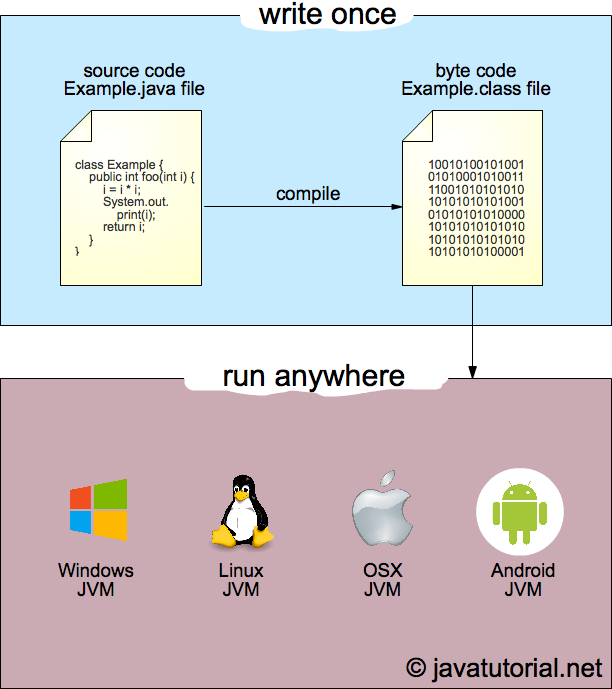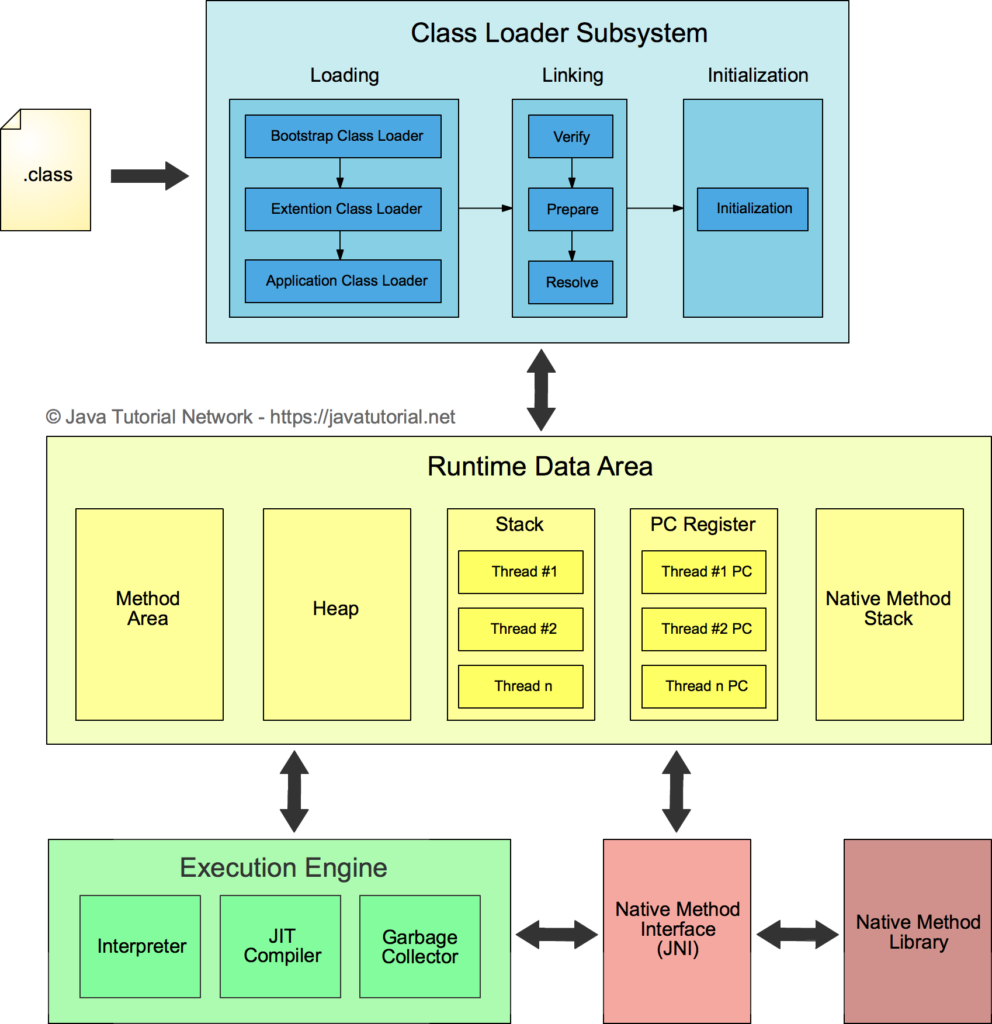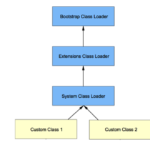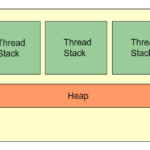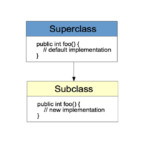This article describes the Java Virtual Machine (JVM) and its architecture
JVM stands for Java Virtual Machine. It provides you with environment to execute your compiled programs, called bytecode. There are multiple implementations of JVM from different vendors for variety of platforms. In this article I will explain the main components of JVM, including memory management, class loading and the Garbage collector.
Usually we do not dig deep into the internal mechanics of JVM. If our code works, then we go on without caring much about the internal mechanics… until the day something goes wrong and we need to tweek JVM or fix a memory leak for example.
Java Virtual Machine questions are very popular in job interviews. Interviewers love to ask various questions about JVM to prove your general understanding of the Java platform.
What is Java Virtual Machine
Java has been designed to run on variety of platforms with the concept “write once, run anywhere”. What does this mean? Unlike programming languages like C++ for example, where the code is compiled for a specific platform and runs natively on it, Java source code is first compiled into bytecode – a .class file. Once compiled the class file is interpreted by the virtual machine (VM). Take a look at the diagram below
First we compile the java source code (the .java file) into bytecode (the .class file). The bytecode is a middle language between Java and the machine language. You can execute the same bytecode on any implementation of JVM without tweaking the code for one or another OS or platform.
Java Virtual Machine Architecture
The Java virtual machine consists of three main areas:
- Class loader subsystem
- Runtime data area
- Execution engine
we will look at each one in greater details
Class Loader Subsystem
We already covered class loaders in a separate tutorial. You may want to look at Java Class Loaders Explained for more details.
Loading
Compiled classes are stored as a .class file. When we try to use a Class, Java ClassLoader loads that class into memory. Classes are introduced into the Java environment when they are referenced by name in a class that is already running. Future attempts at loading classes are done by the class loader, once the first class is running. Running the first class is usually done by declaring and using a static main() method.
There are three types of class loaders:
- Bootstrap Class Loader – It loads JDK internal classes, typically loads rt.jar and other core classes for example java.lang.* package classes
- Extensions Class Loader – It loads classes from the JDK extensions directory, usually lib/ext directory of the JRE.
- System Class Loader –Loads classes from system classpath, that can be set while invoking a program using -cp or -classpath command line options.
Linking
Linking a class or interface involves verifying and preparing that class or interface, its direct superclass, its direct superinterfaces, and its element type if necessary.
JVM requires that all of the following properties are maintained:
- A class or interface is completely loaded before it is linked.
- A class or interface is completely verified and prepared before it is initialized.
- Errors detected during linkage are thrown at a point in the program where some action is taken by the program that might, directly or indirectly, require linkage to the class or interface involved in the error.
Initialization
Initialization of a class or interface consists of executing its class or interface initialization method or calling the class’s constructor for example.
Because the Java Virtual Machine is multithreaded, initialization of a class or interface requires careful synchronization, since some other thread may be trying to initialize the same class or interface at the same time.
This is the final phase of Class Loading, here all static variables will be assigned with the original values, and the static block will be executed.
Runtime Data Area
There are five components inside the runtime data area:
Method Area
All the class level data will be stored here, including static variables. There is only one method area per JVM, and it is a shared resource.
Heap Area
All the Objects and their corresponding instance variables and arrays will be stored here. There is also one Heap Area per JVM. Since the Method and Heap areas share memory for multiple threads, the data stored is not thread safe.
Stack Area
For every thread, a separate runtime stack will be created. For every method call, one entry will be made in the stack memory which is called as Stack Frame. All local variables will be created in the stack memory. The stack area is thread safe since it is not a shared resource. The Stack Frame is divided into three sub-entities:
- Local Variable Array – Related to the method how many local variables are involved and the corresponding values will be stored here.
- Operand stack – If any intermediate operation is required to perform, operand stack acts as runtime workspace to perform the operation.
- Frame data – All symbols corresponding to the method is stored here. In the case of any exception, the catch block information will be maintained in the frame data.
PC Registers
Each thread will have separate PC Registers, to hold the address of current executing instruction once the instruction is executed the PC register will be updated with the next instruction.
Native Method stacks
Native Method Stack holds native method information. For every thread, a separate native method stack will be created.
Execution Engine
The bytecode which is assigned to the Runtime Data Area will be executed by the Execution Engine. The Execution Engine reads the bytecode and executes it piece by piece.
Interpreter
The interpreter interprets the bytecode faster, but executes slowly. The disadvantage of the interpreter is that when one method is called multiple times, every time a new interpretation is required.
JIT Compiler
The JIT Compiler neutralizes the disadvantage of the interpreter. The Execution Engine will be using the help of the interpreter in converting byte code, but when it finds repeated code it uses the JIT compiler, which compiles the entire bytecode and changes it to native code. This native code will be used directly for repeated method calls, which improve the performance of the system.
Garbage Collector
The Garbage collector (GC) collects and removes unreferenced objects. Garbage Collection can be triggered by calling “System.gc()”, but the execution is not guaranteed. Garbage collection of the JVM collects the objects that are created.
Java Native Interface (JNI)
JNI will be interacting with the Native Method Libraries and provides the Native Libraries required for the Execution Engine.
Native Method Libraries
It is a collection of the Native Libraries which is required for the Execution Engine.
References
Oracle’s Java Virtual Machine Specification
